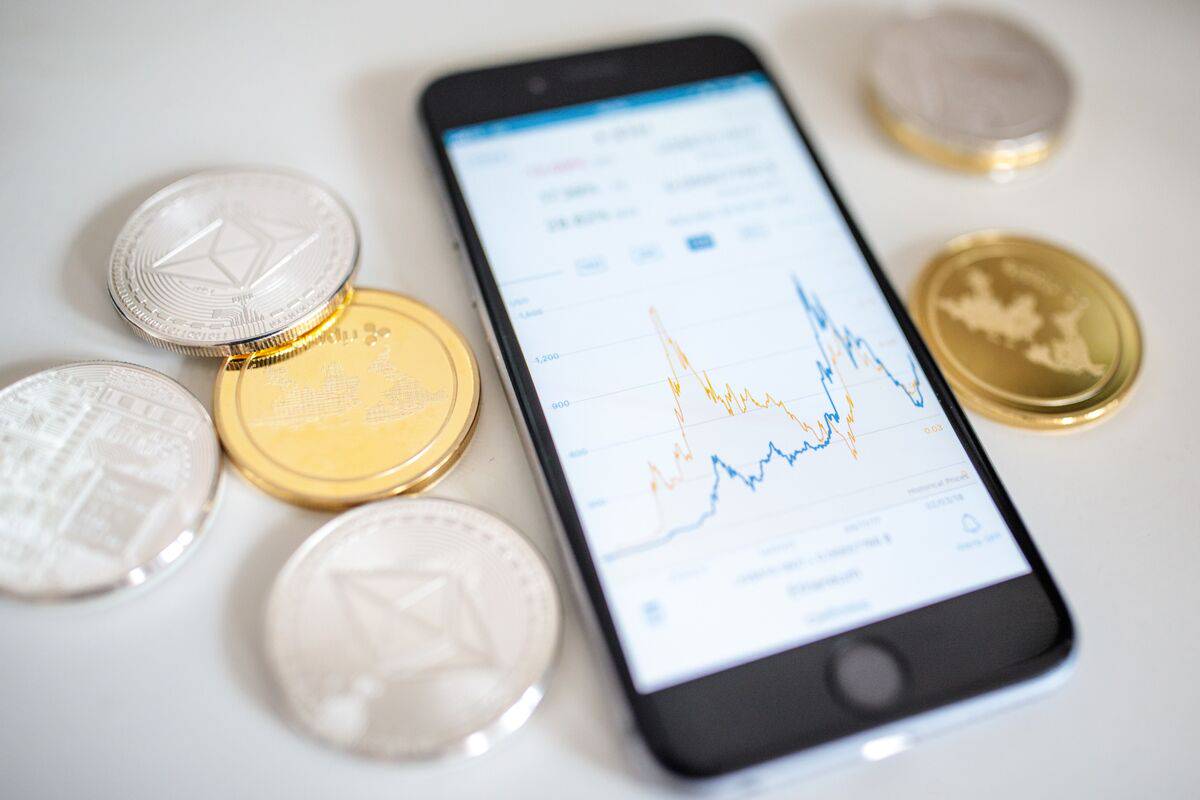Tether expands USDT supply with billion issuance
On-chain data shows that the newly minted USDT has been transferred to Tether’s treasury wallet, a move typically associated with preparing liquidity for upcoming demand. While some remain cautious about potential over-issuance concerns, others argue that this is simply part of Tether’s operations to meet market needs.
One possibility is that as Bitcoin and Ethereum continue to absorb significant liquidity, altcoins could see delayed benefits. Once major assets establish a more stable uptrend, investor confidence may spill over into alternative cryptocurrencies, prompting higher valuations and renewed speculation. However, without a clear shift in market sentiment, this process could take time.
Market analysts point to several factors contributing to this divergence. One key reason is that institutional investors and large-scale traders often prioritise Bitcoin and Ethereum when deploying new liquidity, as these assets offer higher market confidence and better liquidity. Additionally, regulatory uncertainty surrounding certain altcoins has made investors hesitant to allocate significant funds to them, keeping demand muted despite the influx of USDT.
Moreover, macroeconomic factors such as inflation concerns and central bank policies are contributing to cautious investor sentiment. With global markets still facing economic uncertainty, many crypto traders prefer to stay on the sidelines, limiting capital rotation into altcoins.
Market reaction: Optimism rises but altcoins remain stagnant
The freshly minted stablecoins add to Tether’s growing dominance in the cryptocurrency space, reinforcing its role as the primary source of on-chain liquidity. With a market capitalisation exceeding 0 billion, USDT continues to be the backbone of trading pairs across major exchanges. Market participants see this latest injection as a potential catalyst for Bitcoin and Ethereum, but so far, a broader altcoin rally has yet to materialise.
Market analysts suggest that investors remain hesitant to deploy capital into altcoins due to uncertain macroeconomic conditions and regulatory scrutiny in key markets. Additionally, recent data reveals that stablecoin dominance has risen, indicating that traders are still sitting on the sidelines, waiting for clearer market direction before engaging with higher-risk assets.
Furthermore, DeFi and NFT sectors, which typically drive interest in smaller tokens, have seen reduced activity in recent months. Without strong demand from these sectors, altcoins lack the necessary momentum to break out of their current consolidation phase.
“Traders are waiting to see where the liquidity moves before making significant bets on altcoins,” said an industry expert. “While new USDT issuance is generally positive, it doesn’t necessarily translate into immediate gains for smaller projects.”
For altcoins to break out of their current slump, a catalyst—whether a BTC price surge, regulatory clarity, or renewed enthusiasm for DeFi—may be required to draw sidelined capital back into the market.
For now, while the increased USDT supply may provide short-term confidence for major assets, its effect on the broader crypto market remains uncertain. Until liquidity starts flowing into altcoins, many smaller-cap tokens may continue to struggle with weak price action and low trading volumes.
Future outlook: Will liquidity boost altcoin performance?
The new batch of USDT was created through what Tether refers to as an “inventory replenish.” According to the company’s Chief Technology Officer, Paolo Ardoino, these freshly minted tokens are not immediately entering the market but are instead reserved for future issuance when demand arises. This approach allows Tether to respond swiftly to market needs while keeping its total supply aligned with user demand.
While this billion issuance has raised expectations for enhanced liquidity in the crypto market, its immediate effects remain uncertain. Some analysts believe that the expansion could help stabilise volatile price movements, while others argue that without significant capital inflows into alternative cryptocurrencies, the broader market may continue to stagnate.
Tether, the issuer of the world’s largest stablecoin, has minted an additional billion USDT on the Tron blockchain. This latest issuance is part of Tether’s ongoing efforts to maintain liquidity and meet growing demand for its widely used digital asset.
Despite these possibilities, the short-term outlook for altcoins remains uncertain. While the additional billion in USDT could eventually translate into increased market activity, many investors are adopting a wait-and-see approach. Until stronger bullish signals emerge for alternative cryptocurrencies, their struggle for price appreciation may persist.
- Institutional adoption: More significant engagement from institutional players in altcoin markets could increase capital flows.
- DeFi growth: Expansion of decentralised ecosystems using stablecoin liquidity might encourage growth in alternative assets.
- Regulatory clarity: Clearer guidelines from governments and regulators may ease investor concerns and drive demand.
Another key consideration is the role of decentralised finance (DeFi) and other blockchain ecosystems in attracting capital. If traders and institutional investors begin redistributing stablecoin reserves into DeFi protocols or emerging blockchain projects, this could provide the necessary momentum for altcoins to recover. Increased staking, lending, and yield farming activity might incentivise greater use of USDT within the broader market, driving up demand for smaller cryptocurrencies.
Tether’s billion-dollar mint and its market impact
Tether has once again expanded its USDT supply, minting an additional billion worth of the stablecoin. This latest issuance is fuelling bullish sentiment across the crypto market, signalling renewed confidence in liquidity flows. Historically, large mints of USDT have been associated with peaks in market activity, as traders interpret them as signs of institutional money gearing up for further movements.
With Bitcoin hovering around critical resistance levels, traders are watching closely to see whether this injection of capital will fuel a breakout, or if liquidity will remain sidelined in stablecoins amid ongoing macroeconomic uncertainties.
“This fresh billion-dollar issuance could suggest that major players are positioning themselves for upcoming market moves,” said a prominent crypto analyst. “However, whether this translates into an extended bull run remains to be seen.”
The issuance of billion in new USDT has injected a wave of optimism into the crypto market, particularly among Bitcoin and Ethereum traders who view increased stablecoin liquidity as a potential catalyst for fresh buying activity. Historically, large Tether issuances have coincided with bullish market action, fuelling expectations that digital asset prices could see upward momentum in the near future.
Tether’s minting activity often sparks speculation within the crypto community, as it is closely watched for its potential impact on liquidity, market sentiment, and trading volumes. With USDT serving as a key stablecoin for traders and investors, increased supply can sometimes signal growing institutional and retail interest in digital assets.
Altcoins struggle despite increased liquidity
Regulatory clarity will also be a determining factor in whether alternative assets benefit from the liquidity boost. Many investors remain hesitant to enter the altcoin market due to concerns over regulatory actions against specific tokens. If regulatory agencies provide clearer guidelines or introduce more favourable policies, institutional and retail confidence in altcoins could improve, leading to broader market participation.
Despite the influx of fresh liquidity via Tether’s billion USDT mint, the anticipated capital rotation into altcoins has yet to materialise. While Bitcoin and Ethereum have maintained their dominance in daily trading volumes, most altcoins remain stagnant, showing minimal price movement. Traders had hoped that the additional liquidity would trickle down into alternative assets, but so far, the impact has been muted.
“Liquidity injections like this usually drive speculative interest into lower-cap coins, but we haven’t seen that momentum shift yet,” noted a veteran crypto trader. “Much of this capital is likely waiting for a clear signal before rotating into altcoins.”
The potential for increased liquidity to benefit altcoins hinges on multiple factors, including investor sentiment, market conditions, and broader adoption of digital assets. Historically, large stablecoin issuances have been followed by increased market activity, but the timing and distribution of capital remain uncertain.
However, despite this optimism, altcoins have not experienced the same enthusiasm. Many investors remain cautious, as capital has yet to flow significantly into smaller cryptocurrencies. While Bitcoin has seen some increased trading volume, altcoins have mostly remained flat, with only minimal price fluctuations. This stagnation suggests that traders may still be favouring more established assets over riskier alternatives.
- Low trading volumes: Many altcoins are experiencing unusually low trade volumes, indicating a lack of fresh capital flow.
- Investor caution: With upcoming economic reports and regulatory developments, many traders are unwilling to take on additional risk in the current environment.
- Stablecoin preference: Increased USDT supply has not yet translated into significant buy pressure for altcoins, suggesting capital is being stockpiled rather than deployed.
Historically, altcoins tend to follow Bitcoin’s lead in market cycles, relying on momentum generated by bullish movements in BTC to fuel their rallies. However, with Bitcoin facing strong resistance and regulatory uncertainty weighing on the broader market, risk appetite for altcoins appears restrained. Many investors prefer to hold stable assets like USDT rather than speculate on volatile alternatives.

